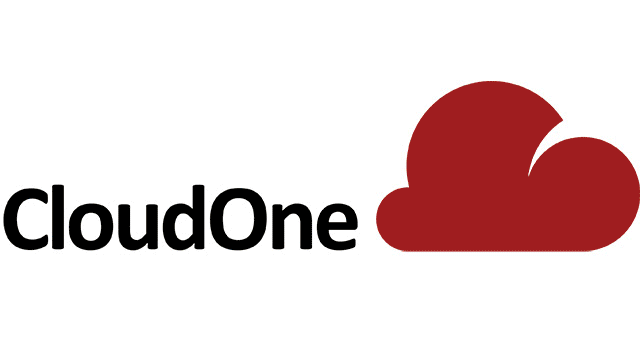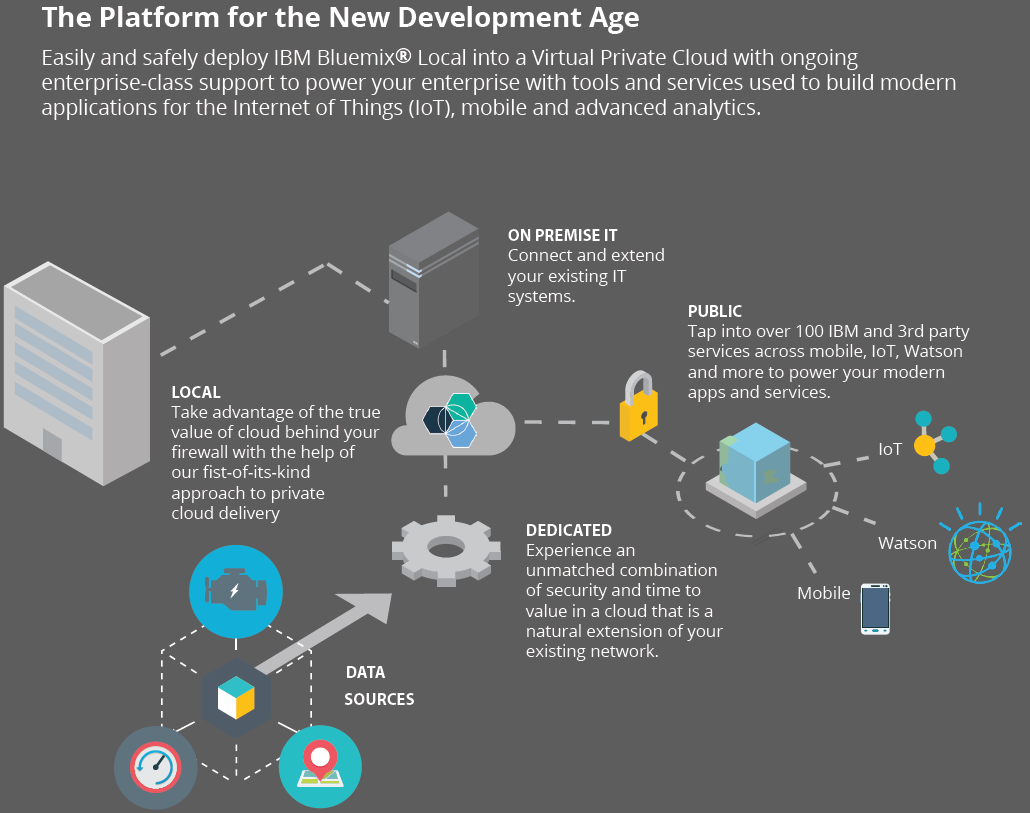CloudOne Binds Its VPC Platform with IBM Marketplace, Bets on Bluemix Integration

What is CloudOne’s virtual private cloud?
“We have become really the de facto standard for how to do IBM software in the cloud,” opened Benjamin Chodroff, CTO, CloudOne, at IBM InterConnect 2016.
Along with IBM’s John Teoh, Benjamin Chodroff provided attendees with a presentation covering CloudOne’s journey—which started early 2015—of integrating into IBM Marketplace.
CloudOne is a managed service provider that works with IBM as a Premier Business Partner. The company is a creator of SaaS-based solutions and the so-called “Virtual Private Clouds” (VPC) for IBM software tools. In brief, with this VPC platform, CloudOne helps companies move their IBM products to isolated, secure, virtual, on-demand environments.
According to CloudOne, this is a case for “clients who cannot securely and safely use public cloud and shared development resources for their applications; clients in regulated industries, or who build products or services that must comply to security, process or validation standards,” etc.
A recent addition to CloudOne’s services is the company’s new hybrid solution, Bluemix Local Delivered by CloudOne. This new service allows companies to quickly access Bluemix Public, Dedicated, or Local on a virtual private cloud—managed by both CloudOne and IBM.
Current features of Bluemix Local Delivered by CloudOne include:
- 24/7 database, application, integration, and managed services
- “a la carte” style add-on services, including additional Bluemix Public services
- Developer access to Bluemix tools controlled by LDAP, etc.
To learn more about how CloudOne integrates Bluemix in a VPC, read this brochure.

The start of the journey
Benjamin related how they wanted to improve the deployment of their VPC solutions. “When we started looking for how we take our service, which is managed services from the cloud, and deploy it on customers who require it, we started realizing it’d be great if people could just learn about what our offering was and actually sign up and buy it.” He noted that many companies and service providers struggle with this.
“The fact that somebody can just come to Marketplace and learn about the product, not even ask a sales question, saying, ‘Yeah! Let’s go!’ That’s a game changer for us.”
—Benjamin Chodroff, CTO, CloudOne
At that stage, the thought of integrating with IBM Marketplace was something to consider. “We quickly realized that’s not our core competency building onto this entire software development, becoming PCI (Payment Card Industry) compliant, [and] making sure we could handle credit cards,” said Benjamin. “Maybe using the [IBM] Marketplace would be a better way of approaching this.”
CloudOne started the integration process back in February 2015 and was able to publish in September 2015. Here’s CloudOne’s integration timeline:
- 2/2015 – Attended a workshop at IBM InterConnect 2015 to learn more about integration with IBM Cloud Marketplace
- 3/2015 – Built a working prototype in Java, internal fundraising for development
- 4/2015 – Refined offering description in Marketplace with the product marketing team
- 5/2015 – Scoped Sunlight (customer portal) integration with development
- 6/2015 – Deployed Sunlight integration to test, testing
- 7/2015 – Deployed Sunlight integration to production, testing
- 8/2015 – Published to marketplace (rejected)
- 9/2015 – Fixed issues and published!
During the integration process, Benjamin explained the need to have endpoints ready to accept orders. This was not a problem for CloudOne as Benjamin notes, “One of the key concepts in integrating to the [IBM] Marketplace is you need to have an endpoint. You need to have somewhere where the orders are sent to. For us, since we had a customer portal, we decided that’s a natural place to be able to receive the orders.”
The integration process
While describing the IBM Marketplace integration process, John Teoh of IBM summarized four key tasks:
- Add a web app product
- Decide if single user or multi-user usage model
- Develop endpoints to manage subscription life cycle
- Provision software or service
He points out another key benefit of integrating into IBM Marketplace: the ability to network publish to the Bluemix catalog. “One nice thing about IBM Marketplace is once you publish in the IBM Marketplace, we can network publish you to Bluemix should you need to have your product also be sold on the Bluemix catalog.” This can be easily done with no significant effort.
“Once you integrate with [IBM Marketplace], all the endpoints are consistently the same, you can listen to the endpoint for orders coming from Bluemix.” —John Teoh, STSM, IBM
“You go through the integration, define all the endpoints at the back, you can use the optional service controller and once you publish all that, we can push your pricing plans, all your marketing data over the phantom Bluemix sub-marketplace which you don’t see and then that will push it into the Bluemix catalog, “explains John. “When a customer buys your product from the Marketplace in Bluemix, the order will then come in by the Cloud Foundry calls which we then bring back through the phantom sub-marketplace then through the main Marketplace.”
The results
There were a number of improvements the integration of IBM Marketplace brought to CloudOne:
Consistent method of publishing a product. “What I like about this is the way they package different things uniformly so that customers can see a wide range of products across IBM and their partners and be able to compare details,” said Benjamin.
Reduced time to deploy pilot environments from 1 week to 1 hour. “We could deploy pilots and very small environments at ludicrous speeds—speeds we’ve never seen before,” said Benjamin.
Increased IBM sales team awareness and led to five new large enterprise deployments.
Improved internal sales efficiencies by using the IBM Cloud Marketplace as a framework for how to define our products. “I really like the framework more than anything else. It really helped us define better what our product was,” said Benjamin.
Forces their sales team to define what is included, what is additional. “The nice thing about the [IBM] Marketplace is that it allows us to start thinking about what are my add-ons, what are the different flavors, sizes, meters, [and] all the different cases,” said Benjamin. “It allows us to start to define how to build exactly for cases.”
Creates a flexible model for metering and capturing costs. “You can charge a one-time charge as a setup fee and you can charge recurring on top of that,” said John. “It’s not binary and AND/OR it’s really an AND. You can also setup usage ranges. You can define pricing tiers.”
Improved operational efficiency in deploying pilots by reducing the amount of questions required to deploy. “We have a demo server where we can spin up new customers to try out the product for a period of time. That’s done free of charge, but if the customer wants to start paying for as little as a dollar an hour, we can now spin up a server in SoftLayer and allow them to try out our product,” said Benjamin.
- In late 2015, IBM and CloudOne delivered a joint SaaS product for collaborative app life-cycle management—based on IBM Rational.
Future plans
Having integrated with IBM Marketplace, CloudOne intends to continue with the following:
- Launch more products:
- IBM Big Insights on CloudOne
- IBM SPSS Modeler Gold on CloudOne
- Continue to work with the IBM Cloud Marketplace to refine their metering and ordering options
- OAuth user integration with their Sunlight portal
- Exploring the SoftLayer provisioning API integrations (currently automated in SoftLayer but not using the Cloud Marketplace API)
Related video
About the speakers










